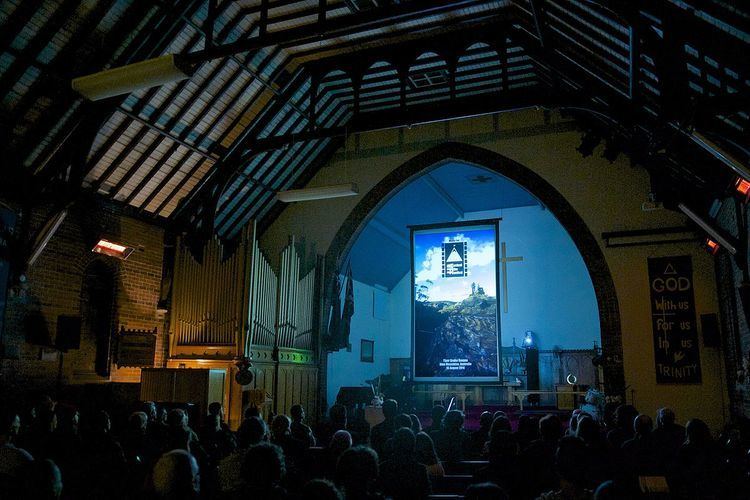 | ||
A vertical video is a video created either by a camera or computer that is intended for viewing in portrait mode, producing an image that is taller than it is wide, rather than the widescreen format normalised by cinema and television. Vertical video was historically shunned by professional video creators, marketers and creative agencies because it didn't fit the aspect ratio (image) of established moving image forms, such as film and television, as well as newer web-based video players such as YouTube, meaning that black spaces appeared on either side of the image. However the popularity of mobile video apps such as Snapchat and Periscope, which use the more mobile-friendly portrait format, have led to an explosion of vertical videos, and made vertical video a priority for video creators, marketers and media companies.
Mary Meeker, a partner at Silicon Valley venture capital firm Kleiner Perkins Caufield & Byers, highlighted the growth of vertical video viewing in her 2015 Internet Trends Report - growing from 5% of video viewing in 2010 to 29% in 2015. Vertical video ads like Snapchat’s are watched in their entirety 9X more than landscape video ads. Snapchat, DMG Media and WPP plc formed a content marketing agency called Truffle Pig in June 2015 that would be focused on creating content for vertical screens. Vertical video was rapidly supported by all the major social platforms including Facebook, Twitter and YouTube.
Vertical video has presented significant challenges to video publishers as they are geared for horizontal video. In October 2015, social video platform Grabyo, which is used by major sports federations such as La Liga and the National Hockey League, launched technology to help video publishers adapt horizontal 16:9 video into mobile formats such as vertical and square.
Vertical filmmaking has aesthetic roots reaching back at least to tall frescoes and stained-glass windows of Christian churches. Noting that the new cinematic art had taken on the old strictures of the theatrical proscenium, on 17 September 1930 Russian filmmaker and theorist Sergei Eisenstein addressed the Technicians Branch of the Academy of Motion Picture Arts and Sciences in Hollywood, calling for a cinema screen of variable aspect ratio (a "dynamic square"), one which would be able to cope with whatever compositional format the filmmaker chose, including a vertical framing. He lost the argument to a screen format standardised at a new Academy ratio (1.375:1) and vertical filmmaking has largely remained confined to experimental artists of the Expanded Cinema movement, which flourished during the 1960s and 70s. If digital video production at the turn of the millennium freed the medium from many apparatus-based constraints it wasn't until the advent of portable screen devices such as the iPhone that the door opened to vertical video production and spectatorship for mass audiences.
By 2013 a number of independent film and video makers had made the creative jump to vertical formats for narrative films despite the limitations of using professional capture and projection apparatuses in vertical orientation. The first festival of specially commissioned tall-screen films, Sonic Acts' Vertical Cinema, was screened at Kontraste Dark As Light Festival in Austria in October 2013; whilst the world's first open competition for vertical film & video, the 1st Vertical Film Festival was held one year later in Katoomba, Australia. Both organisations project onto large-format vertical cinema screens in suitably tall-roofed venues, but there have also been a number of online initiatives to encourage filmmakers to explore the creative potential of the vertical frame, as well as dedicated groups and channels on Vimeo.
